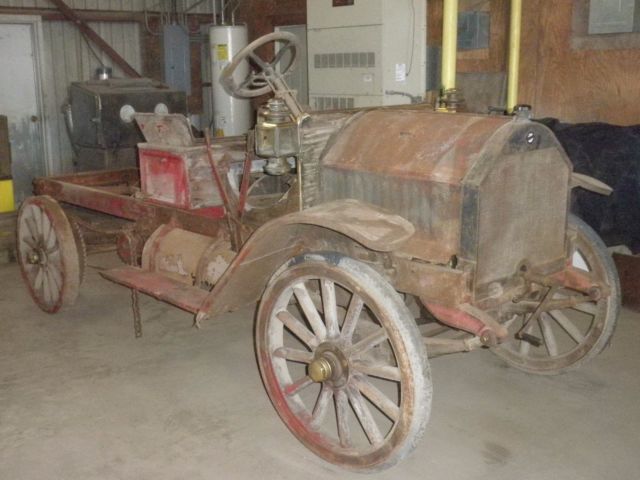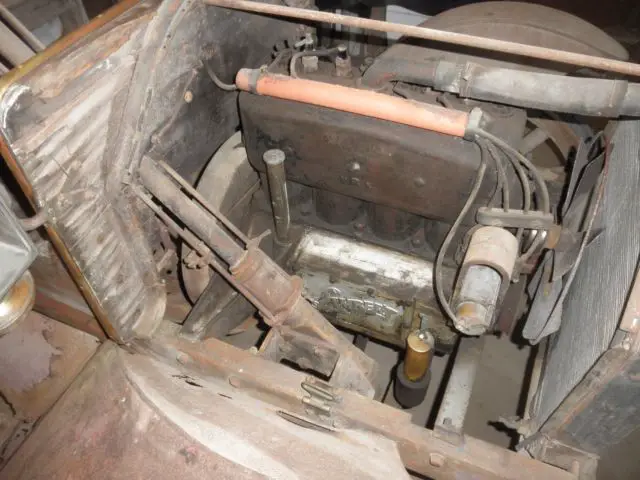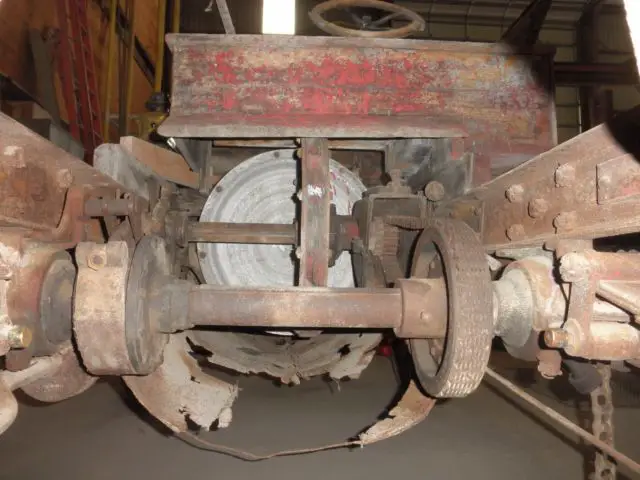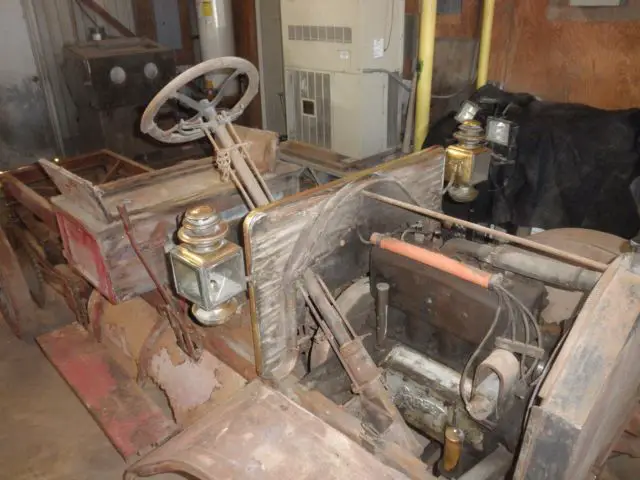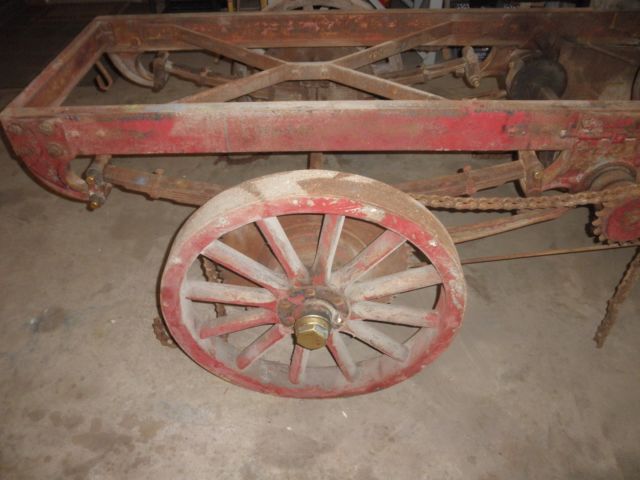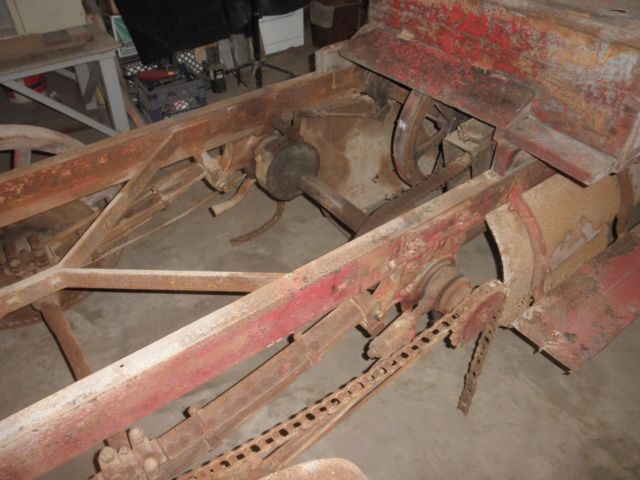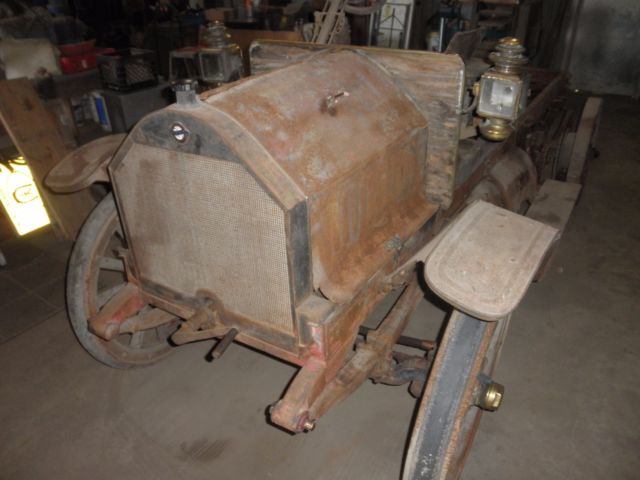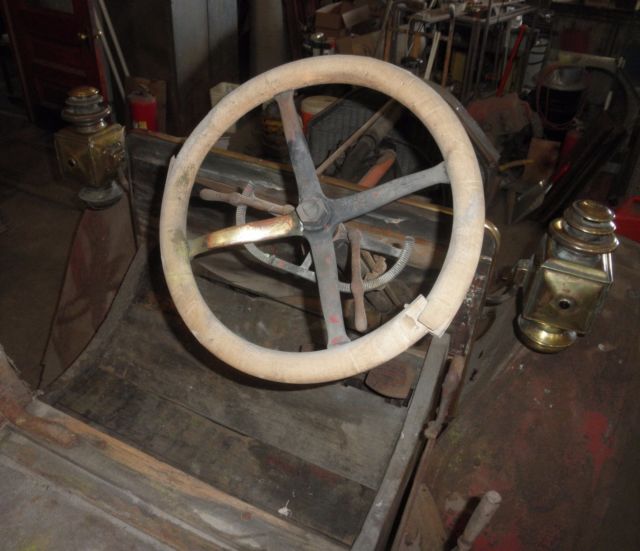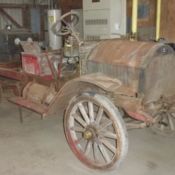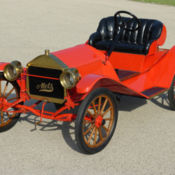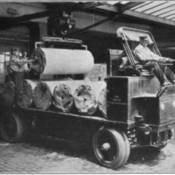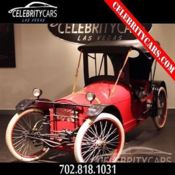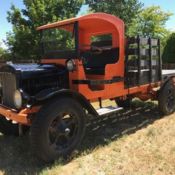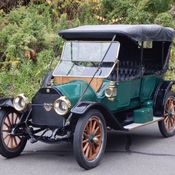Antique Truck 1912-ish Lambert, Very Rare Americana, Unrestored
| Condition: | Used |
| Make: | Other Makes |
| Model: | truck |
| Year: | 1912 |
| Mileage: | 20,000 |
| VIN: | none |
| Engine: | Davis |
| Cylinders: | 4 |
| Transmission: | Manual |
| Vehicle Title: | Salvage |
| Item location: | Houston, Texas, United States |
| Extras |
| Listed by | Private seller |
Description of 1912 Other Makes truck |
|
Lambert Truck Many credit the Duryea brothers of Springfield, Massachusetts, with building the first gasoline-powered American car in 1893. But other historians note that John William Lambert built the first gasoline-powered automobile in 1890 and ran it in Ohio City, Ohio, in 1891*. A few years later, this automotive pioneer founded the Lambert Automobile Company and the Lambert Motor Truck Company. From 1905 to 1917 these companies manufactured thousands of automobiles, trucks, fire engines, and farm tractors, but only a handful of Lambert vehicles are still around today. Up for auction is a Lambert John Lambert held more than 600 patents associated with the automobile, the gasoline engine, and other mechanical fields. He developed a “friction drive” form of transmission that used friction plates instead of gears. Friction drive was used in all Lambert vehicles. Large, 22-inch diameter drive sprockets on both rear wheels indicate that this vehicle is a truck, rather than an automobile. Another indication is that the front axle is positioned near the middle of the engine compartment, rather than near the radiator. I have not been able to determine the model number and year of manufacture, but it was built no earlier than 1908 and no later than 1917. Patent dates on the steering column are February 18, 1908 and June 1, 1908, and Lambert did not build any vehicles after 1917. Judging from photos and advertisements that I’ve seen, Lambert did not use square-glass side lamps prior to 1910. Also the front fenders and rounded covers between the frame and the running boards appear to be identical to those on Lambert’s 1910 Model 36 automobile. Based on that information, I would say that the truck was built no earlier than 1910. This truck has a 5-inch channel frame, and a rectangular rear axle that is approximately 2 inches by 3 inches. Later Lambert trucks with 5-inch channel frames had I-beam rear axles, but I have not been able to determine the year that rectangular axles were last manufactured by Lambert. This truck is being sold as-is. I do not have any components that are not shown in the photos (e.g., the horn, upholstered seats). As you can see, there is rubber on the front wheels, but only the inner wheels are on the rear axle. Part of one rear inner wheel has rotted away. One hub cap is missing. Portions of the body (e.g., hood, fenders, and curved covers adjacent to the running boards) have rusted through, but heavier pieces, such as the frame, suspension, and friction drive components, are intact. The Lambert companies sometimes had their engines manufactured by independent motor builders, including Davis. The name DAVIS can be seen faintly near the top of the engine block, and below the block is the name Lambert. The 4 inline cylinders are cast “en bloc”, and above each cylinder is a primer cup. All engine components appear to me to be original. Front and rear leaf springs are attached to the frame with spring hangers and shackles. The protruding threaded ends of many of the bolts are covered with brass caps. The bench seat sits directly on top of the gas tank. The inner wheels (front and rear) are 31 inches in diameter. The outer diameter of the front tires is about 35 inches. The wheelbase is 109 inches, and the overall length of the truck is 155 inches. The frame is 32 inches wide. The small drive sprockets are 8 inches in diameter. The actual mileage for this vehicle is unknown, since no odometer was ever installed. My wild guess is 20,000 miles. All dimensions specified in this listing are approximate. One of the photos shows a brass radiator cover. The crank handle was recently removed so that the cover could be placed on the radiator. But several small brackets on the inside of the cover prevented it from fitting over the radiator. Those brackets were then cut off, but even then, the cover would not fit because of the trim pieces at the bottom corners of the cover. It looks to me like the cover would fit after modification of the trim pieces. The tapered pin that held the hand crank handle was destroyed when it was removed. I used a bench grinder to make a new pin. Most of the Lambert has not been disassembled or repaired for many decades, but in the past couple of years, a few screws (5), nuts (10), and bolts (8) have been removed. I have put some of them back on the truck. And I still have the other pieces, except for one or two that were destroyed when they were removed. Also much of the brass and copper has been brushed with fine steel wool, and as a result, fine scratches are visible. Free local pickup is available in east Houston, TX. Buyer will be solely responsible for shipping and insurance. If you have any questions, please don’t hesitate to ask. Thanks for looking! * Reference “Antique Automobile” magazine, Vol. 24, No. 5, Oct-Nov 1960, pgs. 341-345 |
 Home
Home Contact us
Contact us NEWEST CARS
NEWEST CARS SELL YOUR CAR
SELL YOUR CAR FAQ
FAQ